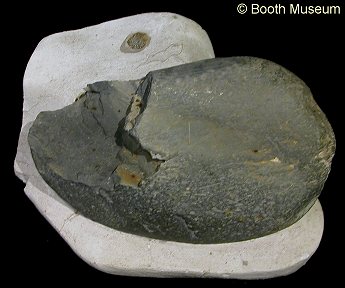 A A |
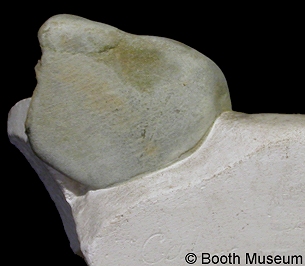 B
B |
Erratics of the British Chalk
Occasional erratics occur within the British Chalk. These apparently land-sourced pebbles, cobbles and boulders are quite problematic, but a number of origins can be considered. Some, particularly those which are large and/or angular, may have been rafted out to sea from nearby land caught in the roots of dead trees. As the tree decayed they would then have dropped to the sea floor. Smaller and well-rounded examples may well represent gastroliths; stomach-stones. Marine reptiles such as Plesiosaurs swallowed pebbles and stored them in their stomach to aid in digestion, or perhaps as ballast. Articulated marine reptiles collected in the US Chalk sometimes retain their cargo of gastroliths and associated stomach contents (example 1; example 2). A third possibility is that they represent dropstones rafted by icebergs, but this seems unlikely given the Late Cretaceous climate.
 A A |
 B
B |
1). Cobbles from the Grey Chalk (Willett Collection, Booth Museum, by kind permission of John Cooper); (A) x1.0, North Stoke, BMB 008213; (B) x1.2, Lewes, BMB 008215. (A) is well rounded (the broken surface is recent) and could be a large gastrolith.
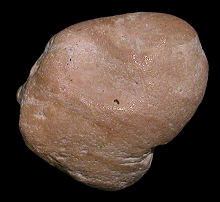 A A |
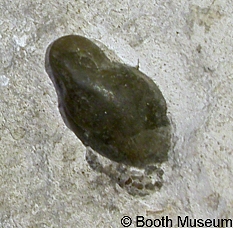 B
B |
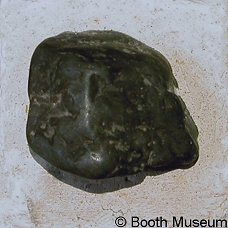 C
C |
2). Polished quartzose pebbles which could well represent gastroliths; (A) x3.0, Lewes Chalk, Seaford Head, Randell Collection, RR1177; (B, C) (Grey Chalk, Clayton, Sussex, Willett Collection, Booth Museum, by kind permission of John Cooper); (B) x3.0, BMB 008210; (C) x2.0, BMB 008211.
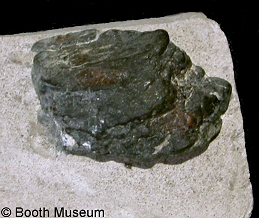
3). This angular pebble is unlikely to have been a gastrolith and may have been rafted out to sea in tree roots instead (x3.7, Grey Chalk, Lewes, Willett Collection, Booth Museum, BMB 008216, by kind permission of John Cooper).
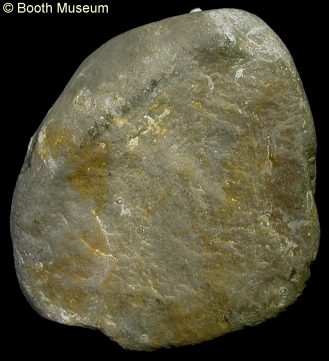
4). Quartzite boulder, far too large to be a gastrolith, possibly rafted out to sea in the roots of a tree (x0.6, Turonian, Houghton, near Amberley, West Sussex, Willett Collection, Booth Museum, BMB 008208, by kind permission of John Cooper).
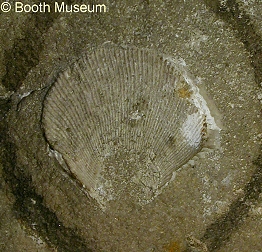 A A |
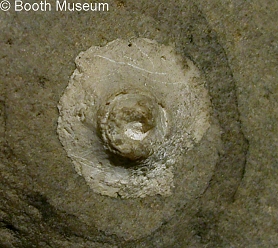 B
B |
5). Fossils encrusting the boulder figured above; (A) Spondylus latus, bivalve, x2.5; (B) crinoid / coral? holdfast, x3.0.
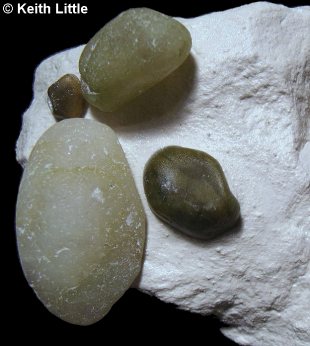 A A |
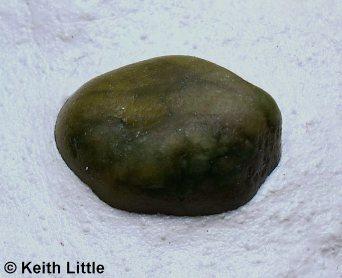 B
B |
6). An association of likely gastroliths, Seaford Chalk, Kingsgate Bay, Kent, in the collection of Keith Little; (A) Overview of association - only the specimen middle right is still embedded in the matrix (x2.0); (B) Detail of the gastrolith embedded in the matrix (x4.5). Images © 2010 Keith Little, by kind permission.
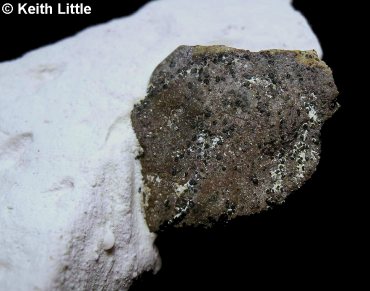 A A |
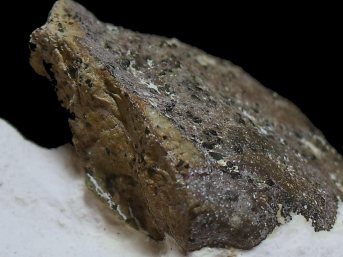 B
B |
7). An isolated erratic, Seaford Chalk, Thanet Coast, Kent, in the collection of Keith Little; (A) x4.5; (B) x6.5. Images © 2010 Keith Little, by kind permission.